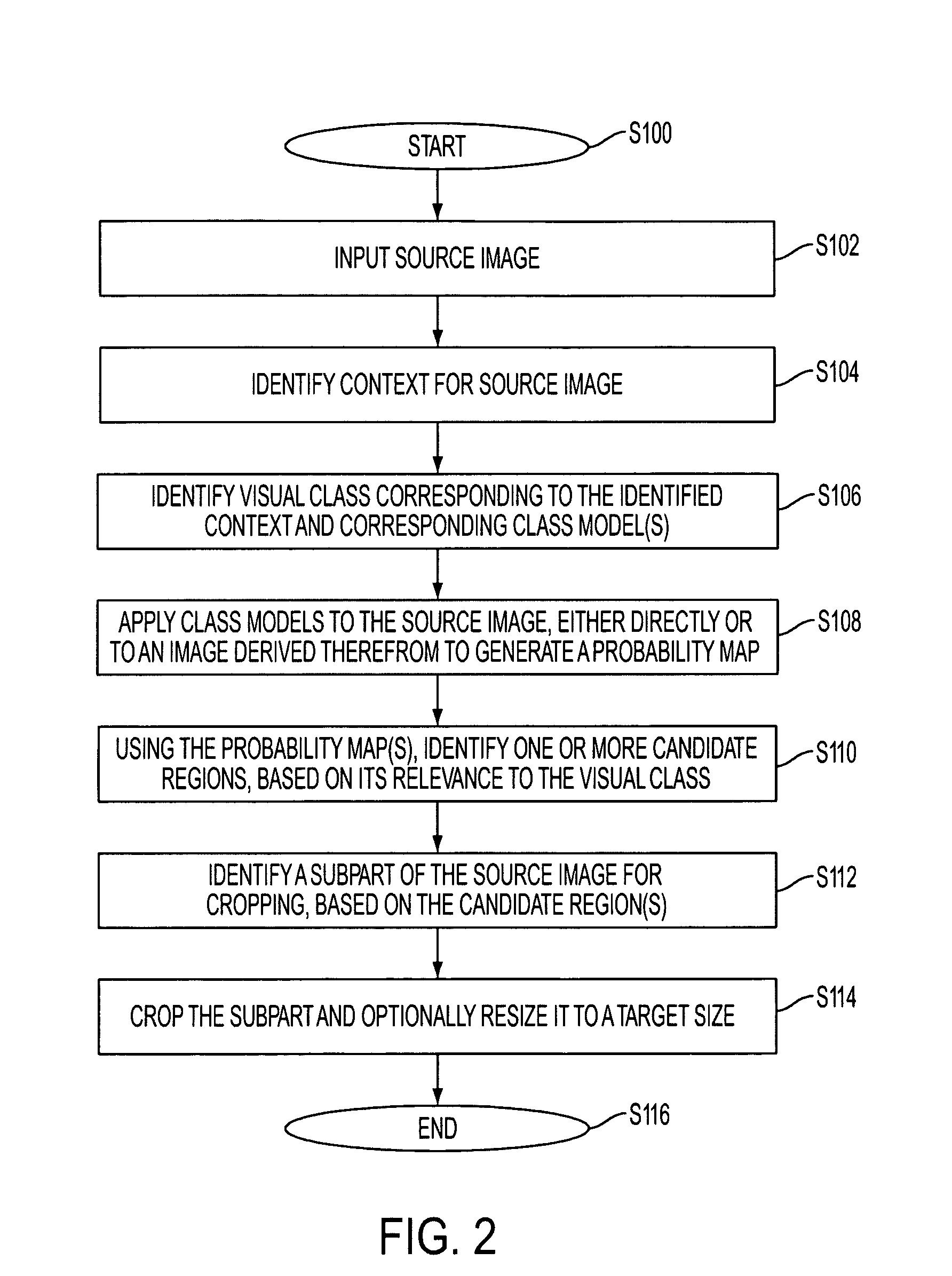Context dependent intelligent thumbnail images
a thumbnail image and contextual technology, applied in the field of digital image processing, can solve the problem that the thumbnail image may not provide useful information for the specific application in which it is being used, and achieve the effect of reducing the number of thumbnail images
- Summary
- Abstract
- Description
- Claims
- Application Information
AI Technical Summary
Benefits of technology
Problems solved by technology
Method used
Image
Examples
example 1
[0118]For a natural image (photograph) 28 shown in FIG. 6, two different probability maps were built for each of three classes (statues, castles, people). In one of them, zi represents local color features (means and standard deviations in RGB computed on local sub-windows). For the second map, local gradient orientation features are used. To compute the probability maps, Fisher vectors as in Eqn. 1, described above, are used. The two class probability maps are combined by a simple mean operation. The auto crop thumbnail images 301, 302, 303 generated for these three classes are shown below the source image. Depending on the context, a searcher may be interested in the “statue”, in the “castle”, or in “the group of people” in the picture (e.g., in a query based search). Three different intelligent thumbnails 301, 302, 303 can be generated for these contexts, respectively, given a fixed target size.
example 2
[0119]For a set of photographs, only gradient orientation features were used to build probability map using Fisher vectors, as described above. FIG. 7 shows example images and intelligent thumbnails of size 200×200 pixels generated therefrom. In these examples, a binary map M was computed from the Fisher Vector based Probability Map P (Eqn. 1) by using an adapted threshold (Eqn (5) with q=0.25). The largest region of contiguous pixels satisfying this threshold was considered as the ROI. The crop window was positioned on the center of its bounding box (Eqn. (7)) and a rectangular region of the selected target size was cropped. Class probability maps (not shown) were obtained for the original images (1st column) considering a “sheep” class model (1st row), “horse” class model (2nd row) and “person” class model (3rd row) and used to generate the resulting cropped images (second column).
example 3
[0120]This example demonstrates that the technique is also applicable to document images. For a set of scanned document images, gradient orientation features were used to build the probability map using Fisher vectors, as described above. “Object” classes in this case were text, math, table, drawing, halftone and others.
[0121]Blobs (patches) on a uniform grid were extracted and gradient orientation based texture features computed for them. Using the universal vocabularies, Fisher Vectors were computed and the probability maps built using Eqn. (1). Concerning the cropping parameters, the target size was 500×500 for the high resolution (2592×3300) original images. The probability map was binarized with a fixed threshold (Th=0.5) and the crop window positioned in the middle of the bounding box (Eqn. (7)) around the largest contiguous pixels.
[0122]FIG. 8 shows example image crops of size 500×500. The class probability maps (not shown) were obtained for the original images (1st column) c...
PUM
 Login to View More
Login to View More Abstract
Description
Claims
Application Information
 Login to View More
Login to View More - R&D
- Intellectual Property
- Life Sciences
- Materials
- Tech Scout
- Unparalleled Data Quality
- Higher Quality Content
- 60% Fewer Hallucinations
Browse by: Latest US Patents, China's latest patents, Technical Efficacy Thesaurus, Application Domain, Technology Topic, Popular Technical Reports.
© 2025 PatSnap. All rights reserved.Legal|Privacy policy|Modern Slavery Act Transparency Statement|Sitemap|About US| Contact US: help@patsnap.com



